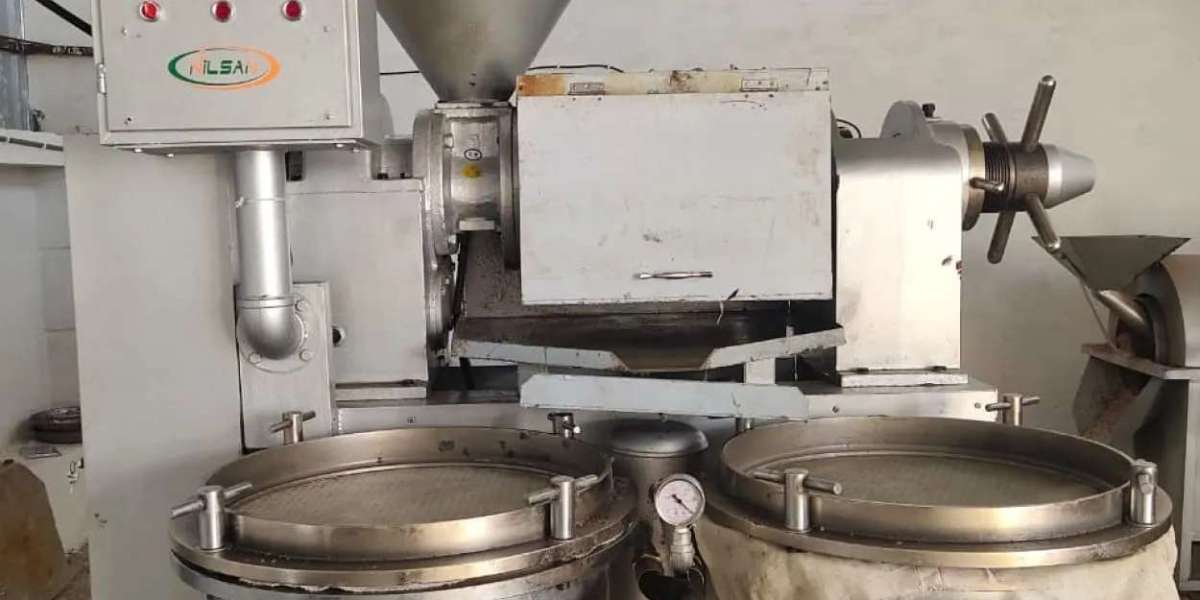In today’s fast-paced and health-conscious world, oil press machines have emerged as indispensable tools for both commercial and home use. As the demand for pure, chemical-free edible oil continues to rise, the significance of a reliable oil press machine becomes more prominent. In this comprehensive guide, we explore the types, benefits, components, working mechanisms, and buying considerations of oil press machines to help you make an informed decision.
What is an Oil Press Machine?
An oil press machine, also known as an oil expeller, is a mechanical device used to extract oil from seeds, nuts, and other oil-rich materials. These machines work either manually or automatically to produce oil from raw materials like mustard, sunflower, groundnut, sesame, coconut, soybean, and more.
The result? Pure, unrefined oil that retains its natural aroma, flavor, and nutritional value—without chemical additives or preservatives.
Types of Oil Press Machines
1. Cold Press Oil Machines
Cold press machines operate at low temperatures, ensuring that the natural nutrients and antioxidants in the oil remain intact. These are ideal for health-conscious users and are often used in small-scale home-based oil production.
2. Hot Press Oil Machines
Hot press machines use heat to extract a higher yield of oil. While this method may reduce some nutrients, it improves the quantity, making it a preferred choice for commercial oil extraction businesses.
3. Manual Oil Press Machines
Manual oil pressers are hand-operated and require physical effort. They are cost-effective and suitable for personal or small-scale usage, especially in rural or off-grid areas.
4. Automatic Oil Press Machines
Fully automatic oil press machines come with digital controls, heating systems, and filtration units, providing a one-touch oil extraction process. These machines are time-efficient and perfect for commercial operations.
Core Components of an Oil Press Machine
To understand how these machines work, it is essential to look at their main components:
Feeder Hopper: Where the raw material is loaded.
Pressing Chamber: Houses the screw or worm shaft that crushes the seeds.
Screw Shaft: Responsible for grinding and pressing the seeds.
Heating Unit: Optional in hot press machines to preheat the seeds.
Oil Outlet: Extracted oil exits through a fine mesh or outlet.
Cake Outlet: Residual seed cake is expelled here.
Control Panel: Found in automatic machines for operational control.
How Does an Oil Press Machine Work?
The process starts by loading the seeds into the hopper, where they are moved into the pressing chamber. A rotating screw crushes the seeds while applying pressure and, in some cases, heat. The oil is separated and flows through the filter or outlet, while the residual seed cake is discharged for further use as animal feed or fertilizer.
The process ensures maximum oil yield and minimal wastage, especially when using modern automatic machines.
Benefits of Using an Oil Press Machine
1. Pure and Healthy Oil Production
Homemade oils are free from chemicals, additives, and preservatives, making them healthier than store-bought options.
2. Cost-Efficient Over Time
While the initial investment might seem high, consistent use of an oil press machine proves economical in the long run.
3. Sustainable and Eco-Friendly
Oil press machines reduce dependency on packaged oils and contribute to sustainable living by utilizing locally available seeds and nuts.
4. Versatile Applications
From sesame to sunflower, one machine can handle multiple seeds, making it a versatile kitchen or commercial tool. We recently upgraded our oil mill with advanced machinery for better efficiency.
Key Considerations Before Buying an Oil Press Machine
1. Purpose of Use
Determine whether you need the machine for home use or commercial production. Home models are smaller, quieter, and more affordable.
2. Capacity and Power
Check the machine's capacity, usually measured in kg/hr, and ensure it aligns with your expected oil output.
3. Material and Build Quality
Opt for machines made with food-grade stainless steel for durability, hygiene, and easy cleaning.
4. Automation and Features
Look for features such as temperature control, automatic feeding, oil filtration, and safety sensors for enhanced convenience.
5. Maintenance and Warranty
Reliable machines should offer easy-to-clean parts, replacement components, and a minimum 1-year warranty.
Popular Seeds Compatible with Oil Press Machines
Groundnut (Peanut): High oil yield and popular in Indian households.
Sesame: Produces light and aromatic oil rich in minerals.
Mustard: A staple in many Asian cuisines with strong flavor.
Sunflower: Light oil ideal for cooking and salads.
Coconut: Used for both culinary and cosmetic purposes.
Soybean: Common in commercial food production.
Flaxseed: Known for its high omega-3 content.
Maintaining Your Oil Press Machine
To ensure longevity and efficient operation, follow these maintenance tips:
Clean the pressing chamber and screw shaft after every use.
Avoid overloading the machine to prevent motor damage.
Use only dry seeds to avoid moisture damage.
Lubricate moving parts regularly in manual models.
Follow manufacturer guidelines for part replacements and servicing.
Final Thoughts
Investing in an oil press machine is a smart, health-conscious, and sustainable decision. Whether you're a homeowner seeking natural cooking oils or a business owner entering the edible oil market, these machines offer a profitable and eco-friendly solution. Choosing the right machine based on your needs, budget, and usage goals can transform your oil production experience. The oil expeller efficiently extracts oil from a wide variety of seeds and nuts.



